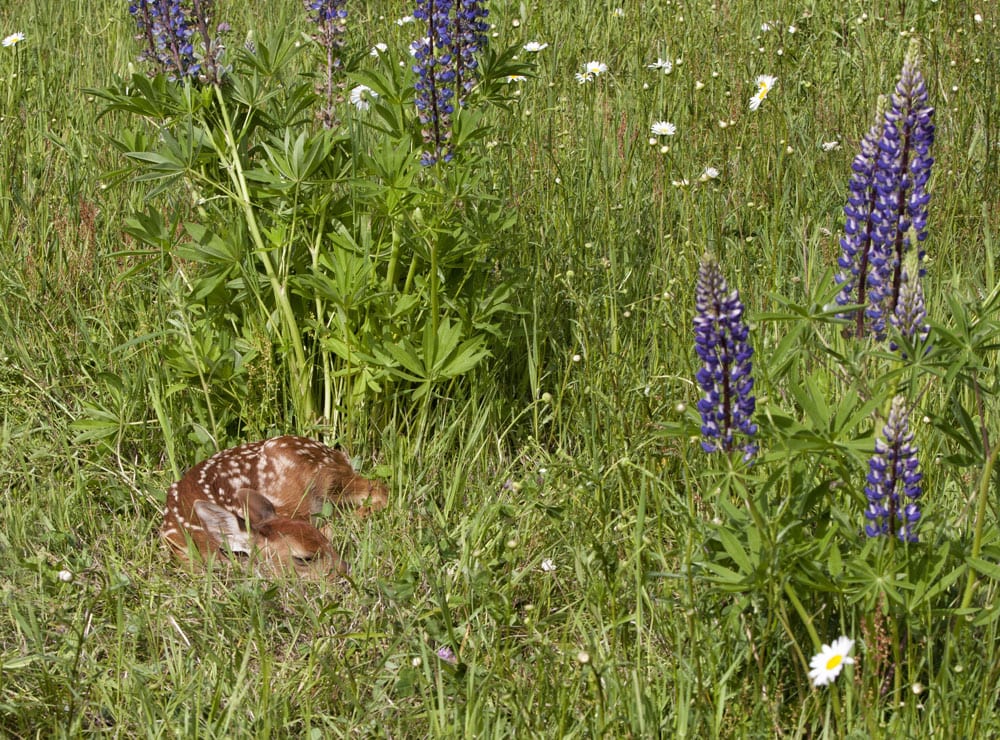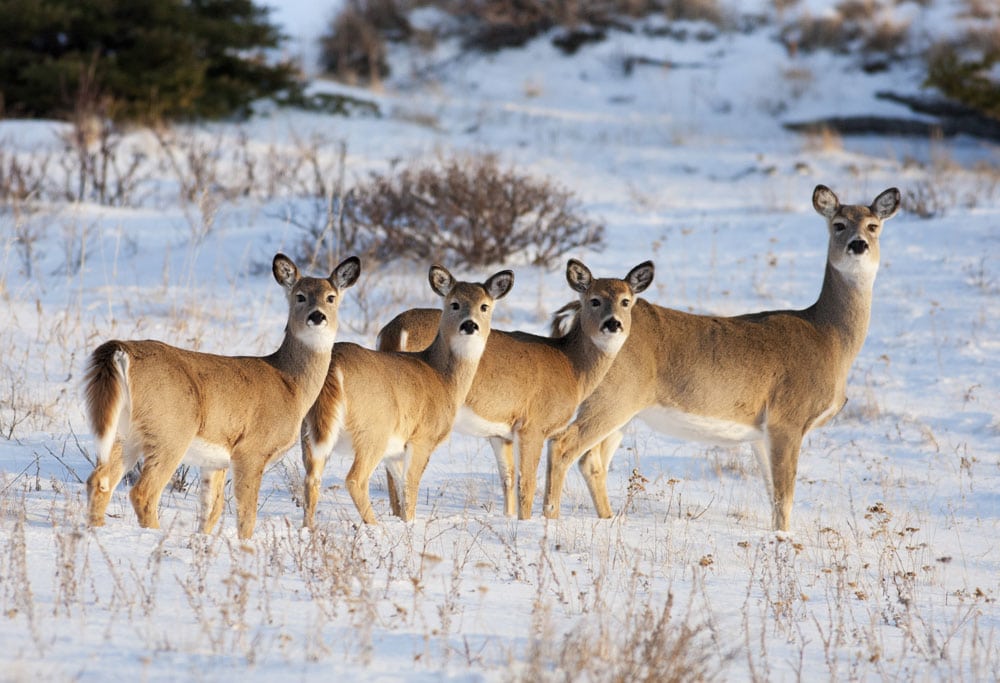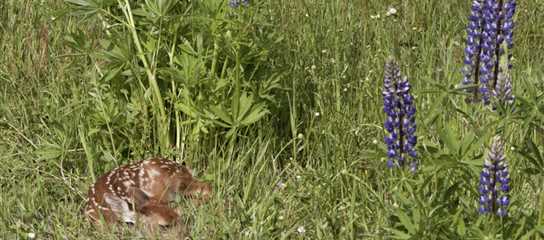Brad Fitzpartick
The very best deer managers don’t want to just talk about what large deer they have on their property. Does, they understand, are a critical element in management, specifically in their role of producing more fawns and future generation of wall-hanging bucks. But to produce good bucks, four, five, and six years down the line, you need to take care of your does, and subsequently your fawns, right now.

Abandonment, stillbirth, and undernourishment are all risks facing your fawns this year, and a high mortality this year will be costly in years to come. For that reason, you need to take the time to minimize fawn mortality, and that means providing does and fawns with the food and cover they need in the winter and spring.
Many deer managers are concerned with available food and cover in the summer and winter months when bucks are growing antlers, but this is a short-sighted management practice. To maintain a healthy deer herd you need to dedicate yourself to providing deer with adequate forage during the winter and spring, when does are under the most nutritional strain and the risks of losing fawns is highest. Predator control is one step, and it can be beneficial to spend the winter months working to keep coyote populations at bay, but it is perhaps more important to feed your does and help them build the reserves they’ll need for milk production and to give birth to healthy fawns.
All winter forage is not created equal, so don’t assume that just because there is food that it provides the right type of nutrition for deer. In areas that have been cleared, invasive Amur honeysuckle is one of the first plants to reappear in disturbed ground in many areas of the country. This plant grows quickly and stays green through much of the winter, giving the impression it’s a viable food source and that white-tails have plenty to eat. In reality, it’s a low-nutrient shrub that out-competes other native food sources, so in an area where forage appears abundant your does could, quite literally be starving. This winter stress results in fawn loss in the spring, and while winter-killed deer are easy to identify, a low fawn survival rate is often less noticeable.
FEEDING DOES DURING WINTER

Begin by looking at food sources that are cold tolerant, attractive and provide the nutrition does need. Legumes are high-quality forage that will help sustain deer through the lean months, so that’s a good place to begin. BioLogic’s Winter Peas are annuals that are planted in the summer in northern latitudes and during the fall months in the south, and this cold-tolerant blend offers sufficient protein to hungry does and grows well in a variety of soil types.
Winter Peas are also very attractive, and deer tend to focus their feeding on them heavily, so if deer densities are average to high you can expect pea plots to be grazed or overgrazed in a hurry. Because of the nutritional content and palatability, it’s a good idea to provide ample peas as a primary autumn and winter food source for whitetails, Be sure that you plant enough so that the deer don’t outstrip their food supply. You must overwhelm the amount of mouths utilizing the crop to realize “terminal yield.”
Brassicas are possibly the best winter food for several reasons. It’s a good idea to dedicate multiple plots to this highly palatable, nutrient-rich plant family. Winter Bulbs & Sugar Beets, Maximum and Deer Radish are highly effective brassica offerings that will sustain deer through the deep freeze of late winter. Different brassicas become palatable at various times throughout the season, but you can expect consumption to happen from late summer through spring, and is an especially important food during the colder periods of winter.
When the green tops are cleaned away, deer will dig up the nutritious root-bulbs and will rely on this valuable, nutrient-rich food source through the trying months of January through April (depending upon your location), often when there is insufficient nutrition.
Premium Perennial, Full Draw and Green Patch Plus all contain brassicas as well as various other plants and will be utilized during late summer, through the hunting season and into winter, providing food sources for an extended period. When frost eliminates other food sources you’ll want plenty of brassicas available to sustain late-season does that are bred in addition to all those rut-weary bucks.
COVER PLANTS

Does utilize cover in the winter for protection against the elements, but adequate cover is critical in the spring when fawns are most vulnerable to attack by predators. In fact, mitigating cover and plantings that provide a physical barrier and preclude predators from finding or catching fawns, may actually be more effective for fawn recruitment than predator elimination. Deer have adapted over millennia to using dense cover to avoid predators, and in areas which are devoid of appropriate cover predators have a serious advantage.
Along fence rows and on the perimeter of food plots, planting a dense cover blend like Mossy Oak’s Blind Spot serves multiple purposes. For starters, it provides a visual barrier that protects deer from predators (both the two and four-legged varieties) and, in the late winter and early spring the remaining grass provides ample cover for fawns. This is especially critical in areas where food plots have reduced other natural cover.
Native warm season grasses (NWSG) are one of the best cover types for fawning cover. Many varieties like big bluestem and Indian grass grow in clumps rather than a big conjoined clump of sod, so it gives fawns a route for escape and cover for concealment.
Reducing fawn mortality is a critical step toward proper deer management, and it requires very little output. The results, however, can be dramatic, and five years from now the record-book buck you are chasing might never have been around were it not for the efforts you made to secure his health and safety today.



